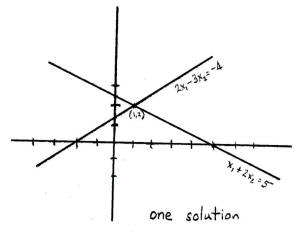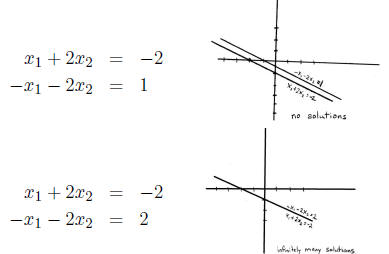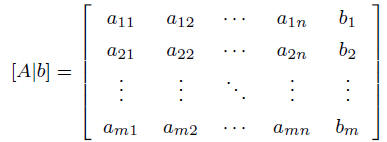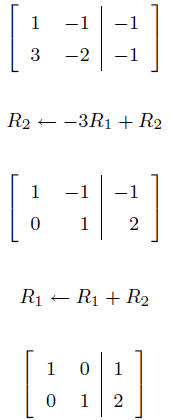Linear Systems of Equations
Outline
 Preliminaries
Preliminaries
 Introductions.
Introductions.
 Sign -up list.
Sign -up list.
 Syllabus.
Syllabus.
 Homework 1.
Homework 1.
 Course Overview.
Course Overview.
 Linear Systems of Equations .
Linear Systems of Equations .
Key Points on Syllabus
 Quizzes every Tuesday.
Quizzes every Tuesday.
 Homeworks due begining of class.
Homeworks due begining of class.
 NO LATE HOMEWORKS.
NO LATE HOMEWORKS.
 Late projects are accepted with 20% penalty.
Late projects are accepted with 20% penalty.
 NO MAKEUP EXAMS. If you miss an exam, or if
you do
NO MAKEUP EXAMS. If you miss an exam, or if
you do
 badly, the weight of that exam will be added
to the final .
badly, the weight of that exam will be added
to the final .
Homework 1
Due Tuesday, Aug. 30, at beginning of class.
 Section 1.1: 4,6,8,10,12,14,16,18,20, 23,
24, 30, 33,34
Section 1.1: 4,6,8,10,12,14,16,18,20, 23,
24, 30, 33,34
 Section 1.2: 2,4,8,10,12, 15, 18, 20, 21,22,
24, 26, 29,
Section 1.2: 2,4,8,10,12, 15, 18, 20, 21,22,
24, 26, 29,
31, 33
Course Overview
 Dealing with many
variables and many equations.
Dealing with many
variables and many equations.
 Linearity.
Linearity.
 Abstraction and Proofs.
Abstraction and Proofs.
A linear equation in the variables
 is an equation
is an equation
that can be written in the form

Examples:

Not Linear:

Systems of Linear Equations
An m × n system of linear equations has the form:

![]() Note: each equation involves the same variables,
Note: each equation involves the same variables,
![]() .
.
![]() A solution of the
system is a list of numbers (
A solution of the
system is a list of numbers ( ) that makes
each equation
) that makes
each equation
true when the values  are substituted for
are substituted for
![]() , respectively.
, respectively.
Example: The system

has solution  .
.
A Geometric View
Exercises:
![]() Graph the solution
set of the equation
Graph the solution
set of the equation  . (Question: why does it
make
. (Question: why does it
make
sense to call this a linear equation?).
![]() Graph the line
defined by the equation
Graph the line
defined by the equation  .
.
![]() Where do these two
lines intersect?
Where do these two
lines intersect?

Geometry 2
But this doesn’t always work:

Solutions of Linear Systems
A system of linear equations has either
1. No solution (inconsistent).
2. Exactly one solution. (consistent).
3. Infinitely many solutions. (also consistent).
Matrix Notation
Since all the equations in a linear system involve the
same variables, we can economize by
writing only the coefficients (not the variables) in a compact form called the
Augmented
matrix:

Example:

Solving Linear Systems

Add (-3) times equation 1 to equation
2.

Add equation 2 to equation 1.

 |
 |
|
Add (-3) times equation 1 to equation 2. |
|
 |
|
| Add equation 2 to equation 1. | |
 |
Elementary Row Operations
1. (Replacement) Add c times row j to row i (replacing row
i, and leaving row j unchanged).

2. (Interchange) Interchange row i and row j.

3. (Scaling) Multiply row i by a constant c ≠ 0.

KEY FACT: Elementary row operations do not alter the
solution set.
Gauss- Jordan Elimination
![]() Apply a sequence of elementary row operations to get the matrix into a form that
is
Apply a sequence of elementary row operations to get the matrix into a form that
is
trivial to solve.
![]() Example: A series of
elementary row operations yields the following transformation
Example: A series of
elementary row operations yields the following transformation

The righthand matrix corresponds to the system of equations:

![]() Trivial to solve!!
Trivial to solve!!
![]() The above matrix is
in a special form called the reduced row echelon form.
The above matrix is
in a special form called the reduced row echelon form.
| Prev | Next |